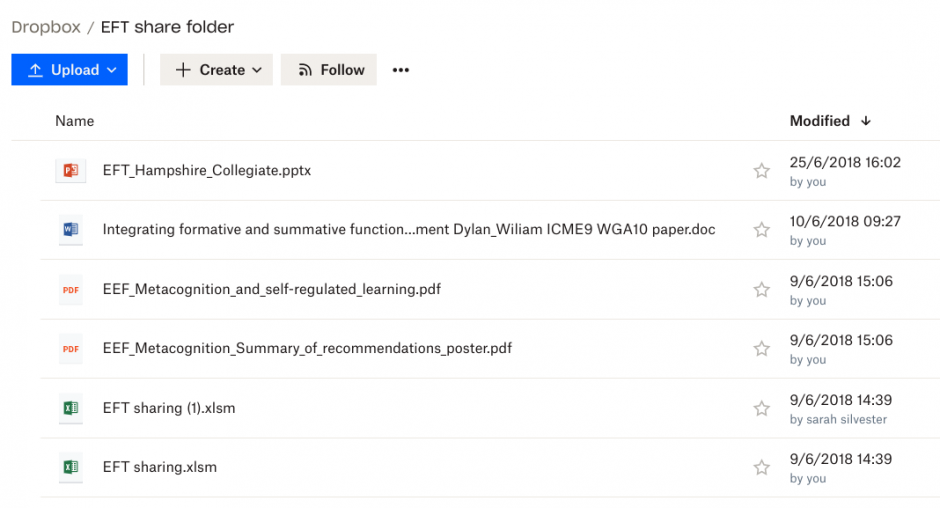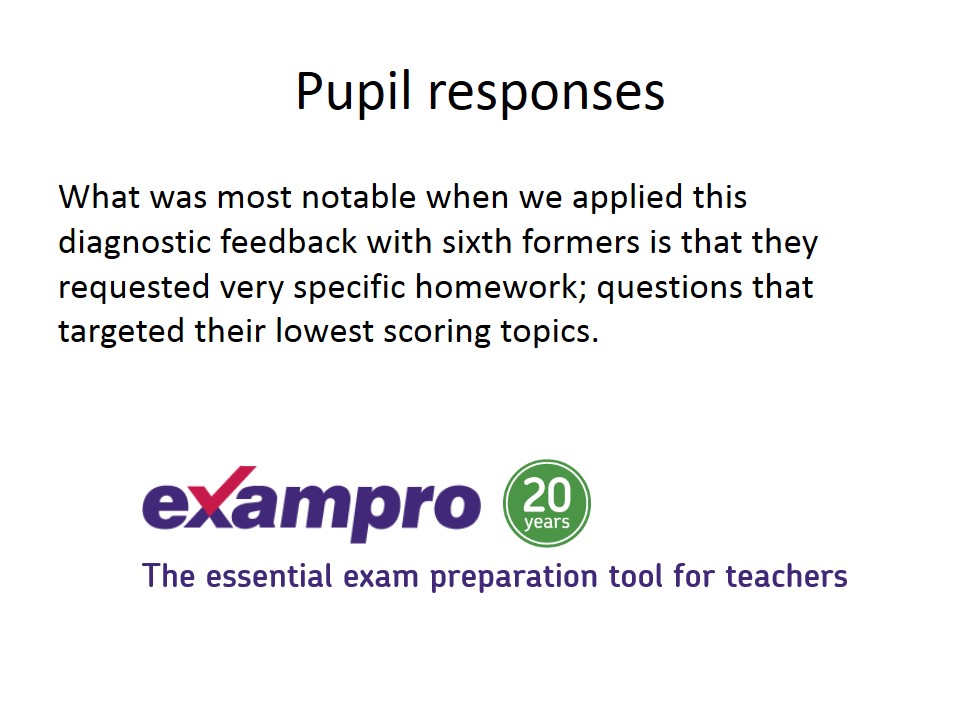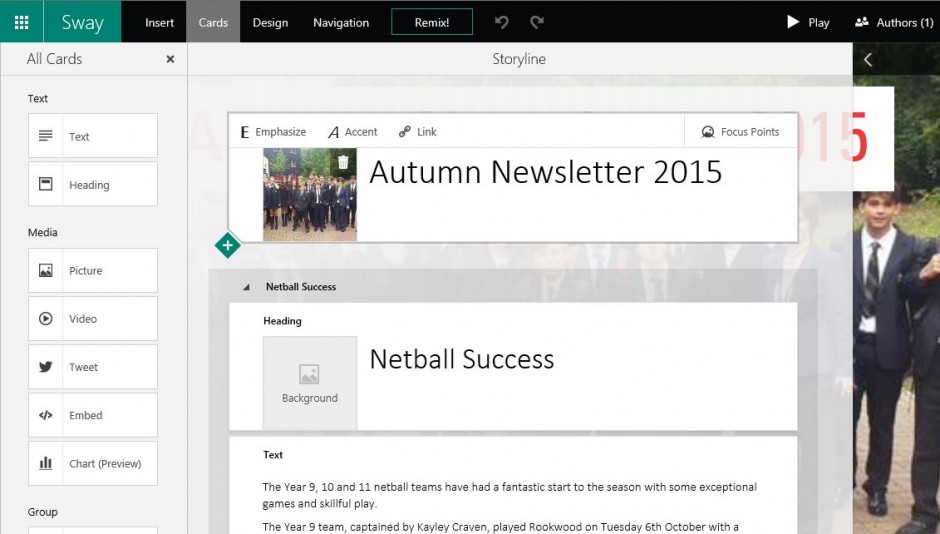Data is not information, information is not knowledge, knowledge is not understanding, understanding is not wisdom.
Clifford Stoll
Has education, education, education, been bullied by the call for evidence, evidence, evidence? Possibly. However, I am keen to be a part of an evidence based profession. Take the relatively simple, but brilliantly so, Exam Feedback Tool (EFT) designed by Peter Atherton, a fantastic Scientist and talented coding mathematician, you are bound to be heading towards an evidence based (metacognitive) approach to assessment.
In case you are pondering that summary… That is exactly what you got.
In September 2014 I forwarded a copy of the EFT tool to Paul Kearley, Curriculum Leader for Science. We discussed the potential (and flaws) of Question Level Analysis to pinpoint the areas for development for our triple scientists, having experienced a turbulent learning experience in Year 10. We immediately put the EFT to use expecting / hoping it would reveal pupils’ learning blind spots and help us, as teachers, prioritise our delivery model for Year 11 – and also help pupils review and prioritise their own learning.
Back in 2014 I was not fully aware of the metacognitive components of the EFT.
Our experience of using the EFT during the first two terms was very positive, particularly with the A Level students. Pupils looked forward to receiving feedback on their assessment and the personalised A4 page summary. The more-able students were quickly able to pinpoint their personalised opportunities and set themselves targets for improvement. The GCE students were then asking for additional work to target these opportunities and then asking to re-take the same or similar questions to show evidence of their improved knowledge, understanding or application. Yes, asking for additional exam questions. There was definitely a cycle of improvement and confidence building. We would later learn that students liked “seeing the green bars grow with each new attempt.”
This process was less successful with students/pupils who were not able to select their own targets (an internal training issue here perhaps), with most opting for vague phrases such as “work harder,” ‘”complete more homework” and “listen in class.” So we started using the EFA to identify appropriate target areas and collate these in a separate spreadsheet prior to mail merging into personalized targets for each student. It was clunky and what started out as a quick process (post marking obviously) was now taking significantly longer.
January 2015
A Level students were engaging with the feedback and asking for more, very specific work. The small groups meant that the logistics were fairly well balanced against the time the students invested addressing their feedback. The GCSE triple scientists has responded to EFT training, but it still took to long to prepare the personalised summary sheets. In the second cycle of Professional Development, Paul shared the tools with representatives from various curriculum areas and the enthusiasm for the EFT spread through the Academy. The benefit of sharing resulted in a colleague from the maths department, Pete Ingleby, adding two Excel enhancements. The NEW and IMPROVED EFT can now:
- auto select target areas from the questions based on a comparison of the individual’s performance compared with the rest of the cohort.
- Print a full class set of summary sheets.
July 2015
Finally, this term I introduced my Year 8, set 5 Maths class to the EFT. I was more than a little surprised by their response. I have written about that experience, so please do not see the EFT as an “exam only” Year 10-13 tool. If anything, I think the Year 8 were even more energised than Paul Kearley’s GCE students. I have not presented / discussed the teaching and leadership opportunities, these are still being investigated / explored… #TLT16 perhaps.
September 2015
The folder has been downloaded more than 2000 times.

Yesterday Paul and I presented at #TLT15. Our colleagues attending contributed a number of valuable points and here are our collective solutions.
Completing the EFT for one group has a cost. If leaders take responsibility for the EFT, completing the EFT for multiple class or a year group, requires even more time, however enables the group analysis features that enables very powerful teaching-leadership enquiry. Still we have the issues of time.
The time invested in completing the QLA, does not have to rest with the teacher. Pupils can add their own scores to an open spreadsheet, or it potentially provides as excellent task for pupils in detention. Always remembering that working with the EFT reduces the need for extensive feedback on the exam paper itself.
The final reflection, it was the AI that really captured the attendees attention. The AI, up until now has been a cause of much debate, but our colleagues response was reassuring.
Lastly, I am looking forward to meeting with colleagues from the session ad hearing about their successes and reflections on how we could evolve the EFT even further. I know Pete continues to share his enhancements for the EFT over at Maplearners – for example a “number of targets” selector and most importantly, his exploration of the “Personalised Test Generator” an additional automated step to assessment the original learning blind spots. Updated 14.11.2022


















November 2022 update
It is great to see the EFT still supporting teachers and being shared.





Pingback: #TLT15 at the University of Southampton | Robert Brooks
Hi Kristian,
Hope you are keeping well?
I’m teaching business at Peter Symonds in Winchester.
Please can you email me the EFT?
Thank you
Freddie
Will do – is there an opportunity to speak?
Pingback: Faster feedback – more with less – Kristian Still